Perfect Connection of a Heat Storage Tank and a Heat Pump
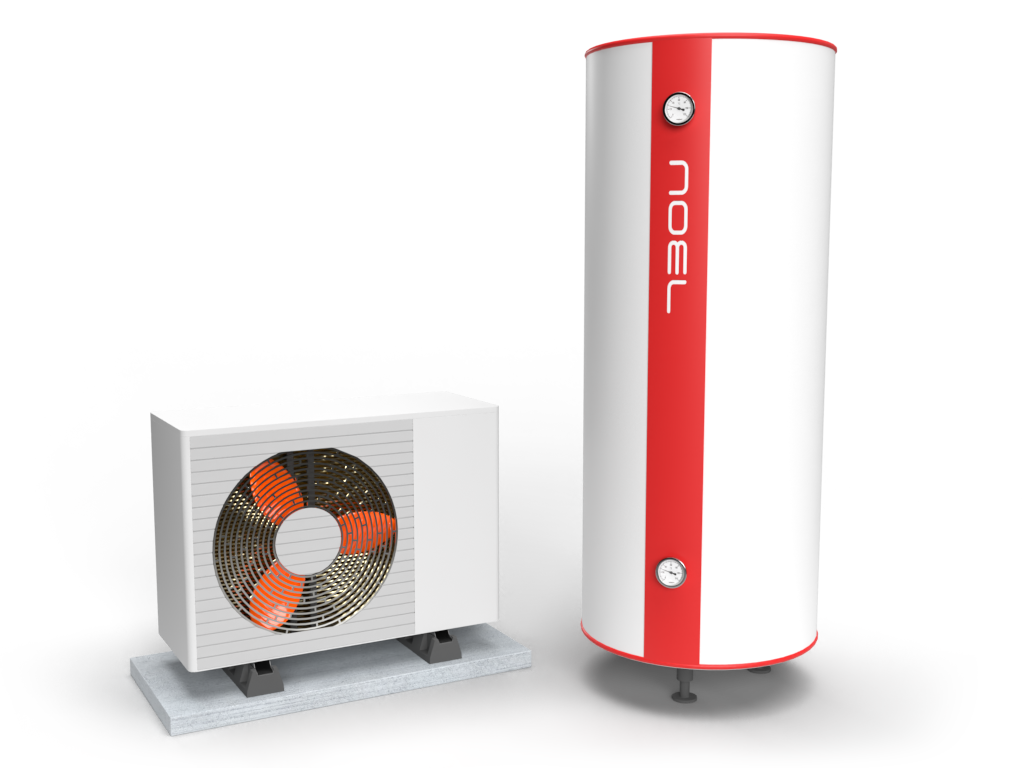
Diagrams of Connection between Heat Storage Tanks and Heat Pumps
The following diagrams are simplified and do not replace the installation project.
They serve as conceptual aids helpful in the project development. The diagrams do not include necessary safety and regulatory elements. Safety measures should be selected in accordance with applicable regulations. Connection of heating devices and fittings should be carried out according to the recommendations of their manufacturers. Pipe diameters, fittings used, and their connection methods should be adjusted to the required flow rates of the heating medium as specified in the instructions. If you need assistance with connecting a Noel tank, please contact our technical department.
Diagram of Connecting Heat Pump and Radiators
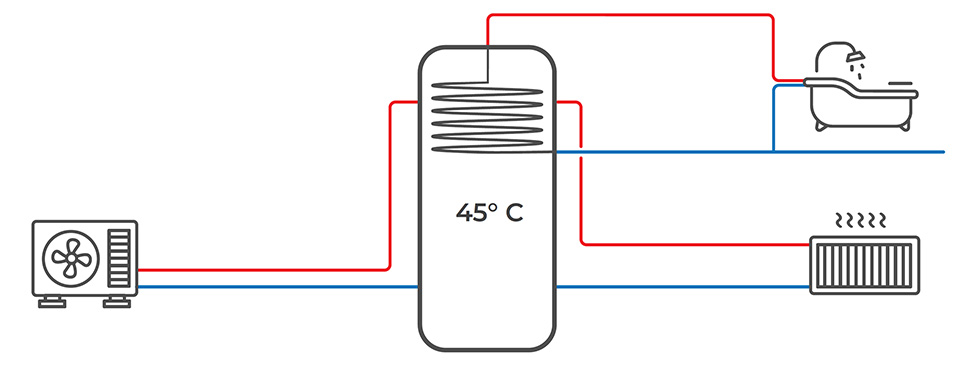
Diagram of Connecting Heat Pump, Solar Collectors, and Radiators
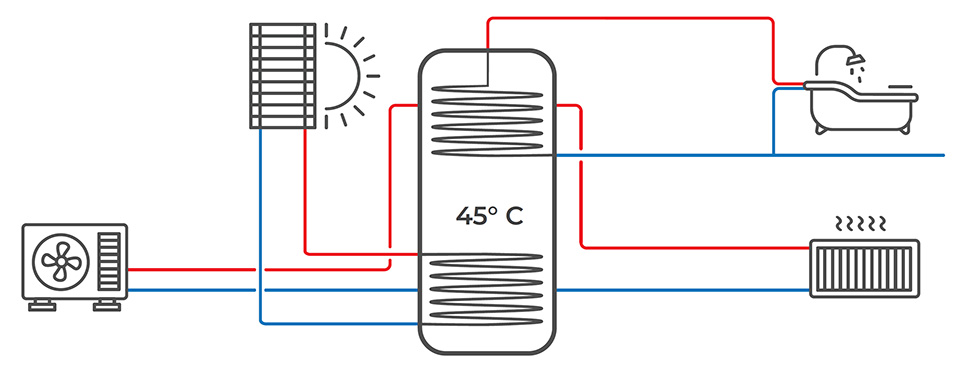
Diagram of Connecting Heat Pump with Solar Panels and MPPT Module

Diagram of Connecting Heat Pump with Solar Collectors
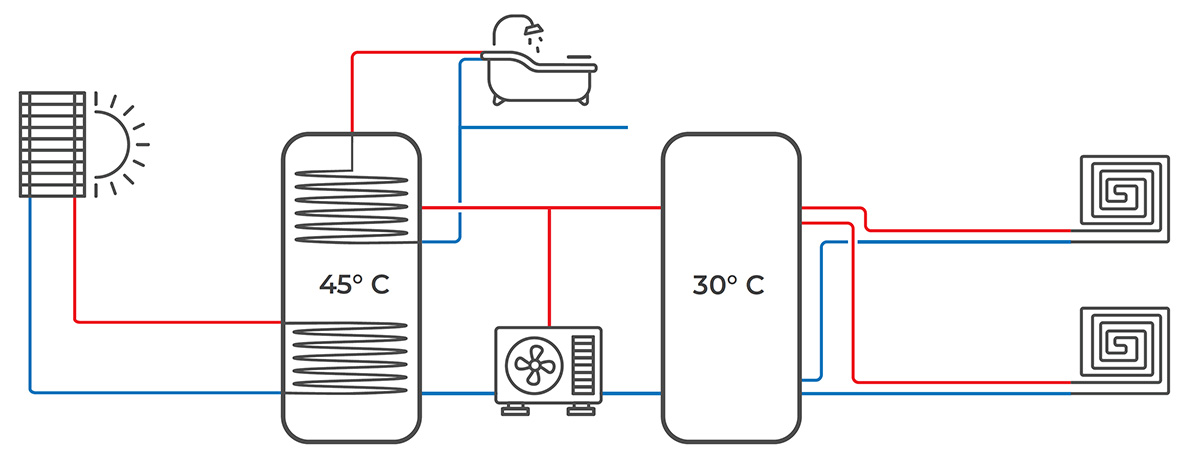
Diagram of Connecting Heat Pump with Electric Heater
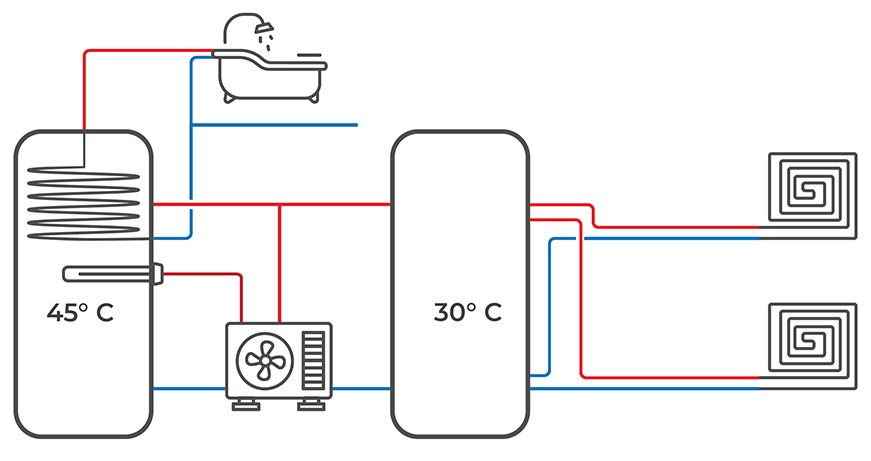
Diagram of Connecting Heat Pump with Solar Collectors with Additional Storage Tank and Electric Heater
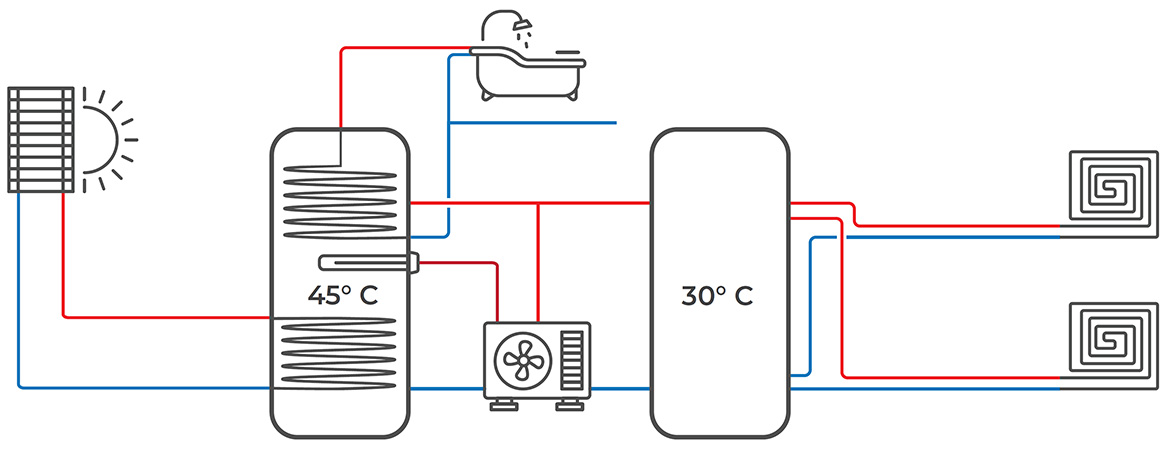
Noel Heat Storage Tank – A Solution to Heat Pump Installation Problems
Here are some problems that can be eliminated by using a buffer with the NOEL installation:
- Inability to provide heat at full power immediately – Heat pumps, especially those with lower power, may not be able to provide enough heat during periods of high demand, such as sudden weather cooling or the need to quickly heat a large volume of hot water.
- Need to limit heat pump on/off cycles – Frequent on/off cycling of the heat pump can affect its efficiency and durability.
- Limitations related to time of electricity acquisition – For heat pumps, the cost of acquiring energy may depend on real-time, which varies depending on the time of day and season, current weather, or air humidity.
- Proper scaling of the heat pump to heat demand – Heat pumps should be properly scaled to the building’s heat demand to operate efficiently. Improper scaling (which is quite common) can lead to the heat pump not meeting performance expectations.
- Temperature fluctuations – Heat pumps, especially those operating at low temperatures, may generate heat at unstable temperatures. This can lead to temperature fluctuations inside the building, which may be uncomfortable for residents.
- Demand for hot water – Standard tanks offered for heat pumps are not efficient, so in winter, it may turn out that heating does not work because the heat pump is trying to meet the demand for hot water.
- Heat pump failure – In the event of a heat pump failure, the building and residents are often left without heating and hot water, and waiting for spare parts can take 2 weeks or more.
Solution to the problems associated with heat pump installations are systems with Noel heat storage tanks. Thanks to the high efficiency of this device, very good performance of the entire system can be achieved, leading to savings during operation. By using one device – the Noel heat storage tank and a properly designed installation – incredibly efficient heating and domestic hot water systems can be achieved.
So, what are the characteristics of installations with Noel heat storage tanks and heat pumps?
- Optimization of heat pump operation – The Noel heat storage tank allows for the accumulation of heat generated by the heat pump during periods of low heat demand. Thanks to effective insulation and an increase in the water volume in the installation, the operation of the heat pump can be managed more efficiently, reducing the number of on/off cycles and extending its lifespan by several years.
- Elimination of temperature fluctuations – The Noel heat storage tank allows for the storage of heat at a stable temperature, which is gradually released into the building, thus eliminating temperature fluctuations indoors. This allows residents to enjoy greater thermal comfort.
- Possibility of storing heat from various sources – The Noel heat storage tank can be used not only to store heat generated by the heat pump, but also from other sources such as solar panels (off-grid, in-grid), solar collectors (solar installations), or solid fuel boilers or fireplaces with water jackets. This increases the energy self-sufficiency of the building and allows for the more efficient use of various heat sources.
- Increased availability of domestic hot water – The Noel heat storage tank is the most efficient device for heating domestic hot water on the market. Even at a tank temperature of 50 degrees Celsius, water at a temperature of 45 degrees Celsius can be obtained from the tap. This is particularly important during periods of increased demand for domestic hot water, such as in the morning or evening.
- Seamless operation in case of heat pump failure – The Noel heat storage tank can also serve as a backup in case of heat pump failure. When the heat pump is disabled due to a malfunction, the heat storage tank can still use another heat source, ensuring thermal comfort in the building during repairs or while waiting for replacement parts.
Connect Heat Pump and Heat Storage Tank.
Learn more about our heating systems and find out how we can help you save on heating costs and improve your heating and hot water installation.

